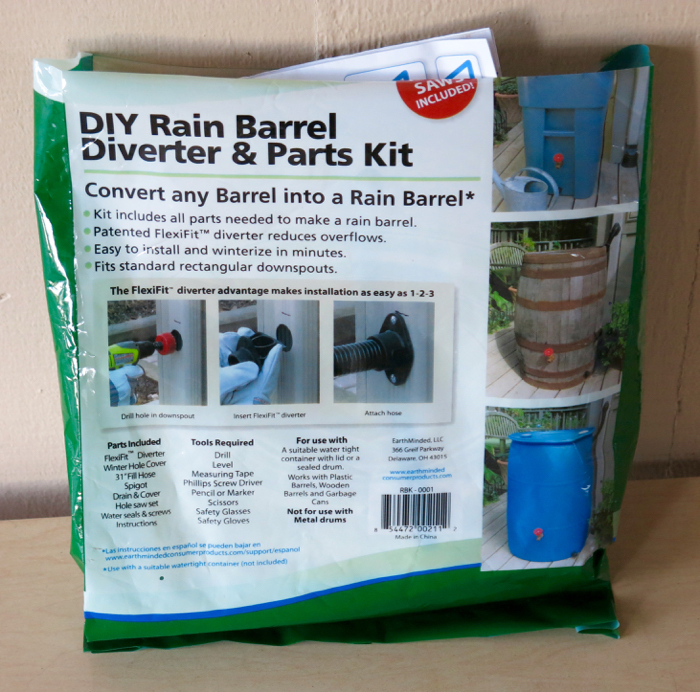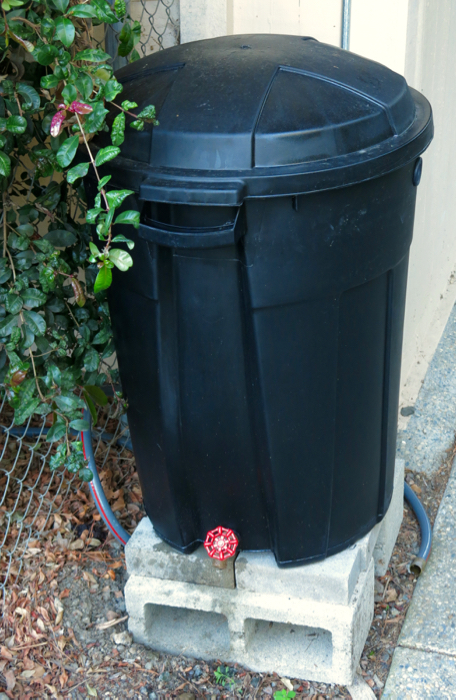Carol and I wanted to put together a rain barrel for the middle school Sunday school class in eco-justice. Of course we waited until the last minute to purchase materials, and so when I saw the “DIY Rain Barrel Diverter & Parts Kit,” it seemed like the perfect solution. The packaging proclaimed, “Works with Plastic Barrels, Wooden Barrels and Garbage Cans.” So on a Saturday evening we purchased one of the kits and a 32-gallon trash barrel, and brought everything to Sunday school the next morning.

The class had fun drilling holes in the trash barrel for the plumbing fittings. But when we tried to install the fittings — a faucet and a drain hole — into the holes, the class found it very difficult to screw the fittings in. Before people got too frustrated, class ended, and after class I figured I’d try putting the fittings in myself — but they just wouldn’t go. After a lot of fiddling, I finally managed to force them into place. It started raining, so I quickly put the trash barrel, er, rain barrel next to an existing rain barrel that was already full. I directed the overflow from the existing rain barrel into the new rain barrel. It started filling. And then I saw that it was leaking around the drain hole. I wound up having to plug the drain hole with threaded PVC fittings, gasket material, and pipe joint compound. I should have replaced the faucet fitting as well, because by the next day, it, too, had a very slow but noticeable leak where it went into the trash barrel. And now, after three weeks, the sides of the trash barrel are very definitely bulging — it simply isn’t strong enough to bear up under the weight of the water.
Instead of purchasing an expensive pre-packaged “DIY Rain Barrel Kit,” I should have gotten a couple of 3/4 inch bulkhead fittings, two sink faucets, and one of those blue plastic rain barrels. Live and learn.

